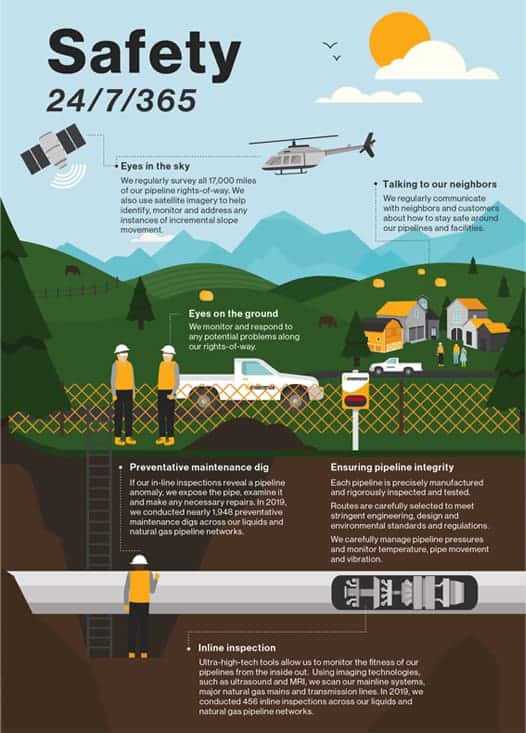Operational Safety
The people who live near our pipelines expect us to operate safely, and the protection of the public and the environment is our highest priority. We see pipeline safety as both an investment, and an obligation. And we use the latest tools, technologies and strategies—while closely monitoring the products we transport—to keep our pipelines operating safely, reliably, and in an environmentally responsible manner.
To ensure our pipelines remain in safe and reliable operating condition, we employ a number of techniques. This includes everything from high-tech inspections and cathodic protection to robust coatings, maintenance activities and 24/7 monitoring of our system.
Our multi-faceted approach to safety includes:
- Inspection and preventative maintenance programs
- Around-the-clock monitoring of pipelines and facilities
- Emergency response training & drills for employees and local emergency responders
- Pressure tests on new and existing pipelines
- Aerial and ground patrols along the pipeline right-of-way
- Automatic shut-off and remote-control valves
- Running a low-level electrical current through pipelines to prevent corrosion
- High-quality pipeline material and protective coating
Recognizing a Leak
Because of Sabal Trail’s thorough maintenance, testing, monitoring, training and safety programs, a leak from a pipeline or facility is unlikely. However, should an incident occur, it’s important for our neighbors to know how to recognize the signs of a leak.
Natural gas is a colorless, odorless, non-toxic substance. Because you may not be able to detect a natural gas leak by smell, you should be aware of other ways to spot a leak. If you see or hear any of the following signs on or near our pipeline right-of-way, please call the toll-free, 24-hour Enbridge emergency number in your area, or an emergency number that you see on a pipeline marker. This emergency phone number is listed on all our pipeline markers.
- You May See
- A moist patch or pool of black liquid… it may be crude oil
- A moist patch or pool of light brown or yellow liquid… It may be synthetic crude or condensate
- A steam-like cloud, or a frost-like appearance on the ground… It may be a natural gas liquid
- Water bubbling or being blown into the air; continuous bubbling in wet or flooded areas
- Oily sheen on water surfaces… It may be crude oil
- Dead or dying vegetation in an otherwise green area
- Dirt being blown or appearing to be thrown into the air
- A white vapor stream or mist-like cloud over the pipeline
- Unexpected frost or ice on the ground
- Discolored snow or vegetation
- A dry area in a wet field… It may be natural gas
- Fire or flames coming from the ground or appearing to burn above ground a cloud of steam or mist caused by condensation and freezing moisture… it might be a natural gas liquid
- Ice buildup on exposed pipe, and frozen ground around an underground pipe.. It might be a natural gas liquid
- Yellow-stained snow… It might be an indication of a natural gas liquid accumulating under the snow
- You May Hear
- An unusual hissing, blowing, or roaring noise coming from the pipeline right-of-way, or a connecting facility… it could be a pipeline leak
- You May Smell
- An odor similar to gasoline or diesel fuel… it may be a refined oil product
- An odor similar to gasoline, but much stronger and less pleasant… It may be a natural gas liquid
- A slight petroleum or hydrocarbon smell
How We Respond
We’ve designed our systems and trained our people to be on the lookout for trouble and to spot it right away, so that when an incident occurs, we respond safely and effectively to minimize the impact on people, communities and the environment.

